
Btrax Design Company > Freshtrax > Marketing in Ja...
Marketing in Japan – Love of Anime and American Brands
San Francisco and Tokyo based experience design agency, btrax held an event “Mission: Japan Expansion” on December 4th to discuss insights on characteristics of Japanese, as well as business expansion opportunities and unique UX design in Japan. At the event, I talked about 2 unspoken characteristics of Japanese, with a focus on Japanese Millennial women. This insight should help you in creating strategies that target Japanese consumers. Today, I am going to share what was discussed and provide some additional notes from the talk.
1. Love for Anime
What do you think of when you hear the word “Japan”. Sushi, Ninja, Harajuku, or Nintendo? Anime is another word that people associate with Japan. In many cases, stereotypes are an exaggeration of a culture’s reality. For example, sushi is not a Japanese staple nor do Ninjas exist currently… well, not in the open.
However, with anime, it is safe to say that it’s a part of the culture and more Japanese than you may think do indeed love watching anime. According to The Association of Japanese Animations, the market size of the animation industry in Japan in 2017, including TV, movies and video streaming, reached a record high of over ¥2.15 trillion (about $19 billion USD).
Why does this matter? Because knowing that Japanese are fascinated by anime can help your company create fun, interactive, and engaging marketing campaigns when growing awareness in Japan.
Netflix Connects with Commuters at Shinjuku Station
The streaming giant, Netflix, covered Shinjuku station with famous phrases from anime to not only build awareness about their service but also create a fun engagement. Shinjuku station is the busiest station in the world with 3.53 million people using the station every day! When people took a picture of a phrase using the flash on their smartphone, the anime scene in which the phrase was said showed up on the station wall.
100通りの名言。その一言で、フラッシュバックする。
新宿駅メトロプロムナードをジャックした100個の #Netflixアニ名言。
感情を揺さぶる名言に出会おう、忘れられない名言と再会しよう。#ネトフリアニメ pic.twitter.com/lIPs7VTgDF
— Netflix Japan Anime (@NetflixJP_Anime) July 28, 2018
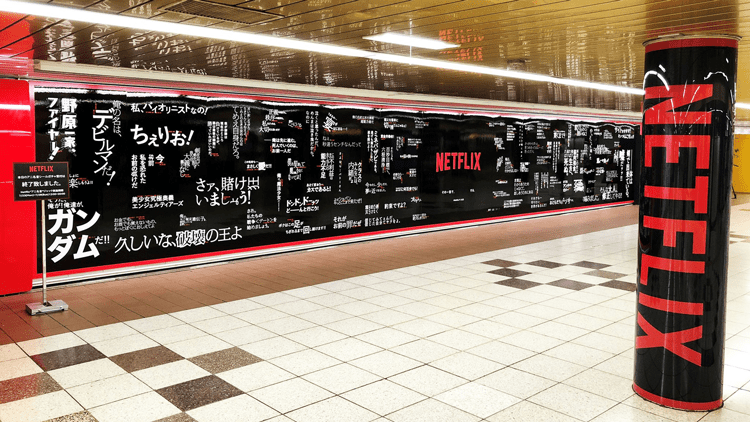
Nexflix’s Out-of-Home ads at Shinjuku Station (source: @NetflixJP_Anime)
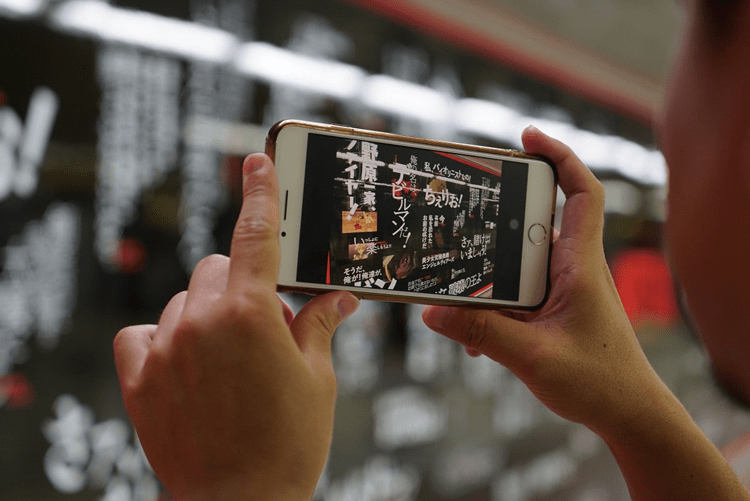
A commuter is taking pictures of a famous phrase from anime to see the anime scene where the phrase was said (source: @NetflixJP_Anime)
The event appeared to be very successful with a lot of social media posts and shares on the internet. The interactive out-of-home advertisement was part of a campaign to promote Netflix’s anime programming.
The Success Factors
People walking through Shinjuku station could not help but share the unique experience of interacting with their favorite anime. As a result, the campaign generated a large amount of social media exposure and a lot of word of mouth, which helped other people become aware that Netflix offers a huge amount of anime content. Anime has an extraordinary power to generate buzz because of anime’s two natures:
1) Anime evokes emotions
Evoking emotion is one of the most powerful marketing techniques to inspire people to take action. Japanese anime typically have strong plots and lasts more than one episode. Throughout the episodes, users go through many scenes that evoke various emotions; sadness, joy, anger, and love. Through collaborations with anime, people can easily get more emotional and connected to a brand than seeing a regular marketing campaign.
2) Anime provides a shared experience
It’s easier for human beings to connect with people who share the same experience. Let’s say you are at a networking event and you just found out the person you are talking to graduated from the same high school as you did. You immediately feel closer to the person.
The same logic applies to people who share a favorite anime. I would say that most Japanese have a favorite anime or two. Regardless of the generation you are part of, there are a few anime that almost all people once loved or grew up. Japanese people instantly feel connected once they find out they have the same favorite anime as someone else.
Netflix succeeded in gaining a visceral connection with passers-by by displaying popular phrases from more than 100 anime. 100 different anime is enough to cover most people’s favorite anime, which enabled Netflix to connect with almost all who saw their campaign.
Anime that Japanese Millennial women grew up with
If you have ample marketing budget to spend like Netflix did, collaborating with 100 different anime may be an option, but it can be cost prohibitive due to the licensing fees. If your budget is limited, pick just one anime that your target audience loves or grew up with.
As I mentioned earlier, each generation has anime that was popular during their childhood. Listed below are some of the most popular anime among Japanese Millennial women.
- Sailor Moon
- Marmalade Boy
- Dragon Ball
- Slum Dunk
- Rurouni Kenshin
Sailor Moon became a sort of social phenomenon and all young girls in Japan were obsessed with the anime. It’s important to note that girls also grew up with anime that were typically targeted at boys like Dragon Ball, Slam Dunk, Rurouni Kenshin due to the influence of male siblings or friends.
The revival of childhood anime
Anime that was popular during the 80’s and 90’s are now being revived with grown-up Millennial women getting excited about products connected to the anime.
Sailor Moon
It’s been 25 years since the first Sailor Moon episode was broadcast on TV. To celebrate the 25th anniversary of the show, Sailor Moon partnered with many companies and organizations, such as Shiseido, Tokyo Philharmonic Orchestra, Citizen Watch, and ISETAN, to create products targeted at Millennial women. The collaboration products included cosmetics using Sailor Moon’s fancy magic sticks as a motif, lingerie that looked like Sailor Moon’s costume, jewelry, handbags, and even an orchestra’s live performance that played songs used in the anime show.
We see how successful these anniversary collaborations were by looking at the Sailor Moon store in Harajuku packed with Millennial women with the collaboration products selling out instantly. 100,000 people reportedly visited another anniversary event, the Sailor Moon exhibition, in only 26 days.
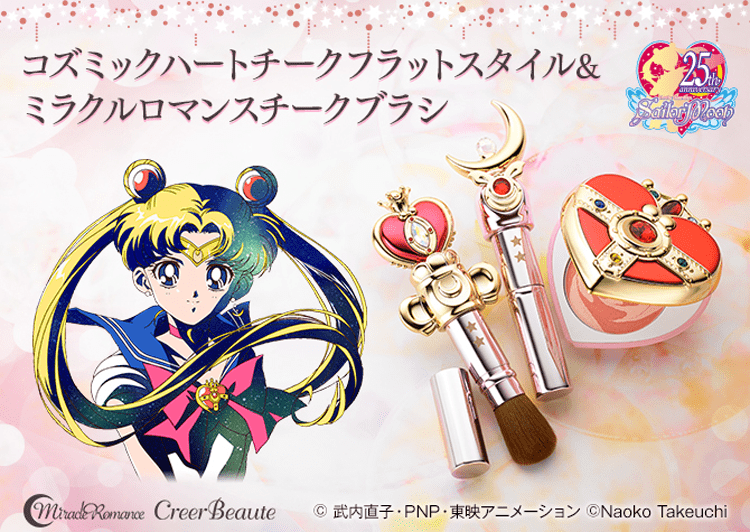
Sailor Moon cheek higher and blush using Sailor Moon’s magical tools as a motif (source)
More examples of marketing campaigns using anime
Through the examples of Netflix and Sailor Moon collaborations, we’ve learned marketing promotions using anime can work very well. Here are a few more examples of unique collaborations of brands and anime:
Nissin Cup Noodles x Sazae-san
Nissin Foods, the manufacturer of the instant noodle product, Cup Noodles, collaborated with a nationally beloved long-lasting TV anime series, Sazae-san. According to research, 96% of Japanese know Sazae-san. Since its first show in 1969, the anime has been broadcast at 6:30 pm every Sunday with many families watching the show while they have dinner together. The fact that watching Sazae-san is deeply rooted in the Japanese lifestyle has enabled the anime to achieve 96% of recognition among Japanese from 15 to 79 years old.
Cup Noodles created a TV commercial by making the original classic anime look like a modern style anime. In the TV commercial, the story shows how the main character, Sazae-san, met her husband in high school. The video instantly went viral not only because everybody in Japan grew up with and knows the anime but also because characters from the original anime were depicted as being more attractive than the original, giving people a fun topic to discuss online and in real life.
Toyota x Doraemon
Doraemon is the most well-known and beloved anime character in Japan. Its recognition rate is 97%, which is even more than Sazae-san. Toyota created a real-life Doraemon in a world 20 years later than the original setting from when the main characters were in 5th grade. The TV commercial was very successful resulting in a total of 20 episodes being produced.
Needless to say, Doraemon being so well recognized helped the campaign become more popular, but their exquisite casting also played a part in getting people very excited. While most of the actors and actresses perfectly matched the images that each character would be when they grow up, there were some unexpected castings that made people talk more about the campaign. For example, Doraemon, which is the main character and a robotic cat who travels back in time from the 22nd century was played by French actor, Jean Reno. The TV commercials were very true to the original anime and included a lot of references, helping connect people to the commercials.
Gucci x JoJo’s Bizarre Adventure
Italian luxury fashion house, Gucci, partnered with Hirohiko Araki, the author of Jojo’s Bizarre Adventure, to create a special one-shot manga story. As opposed to anime, which focuses on tv or movie content, manga is associated with comics or magazines. There is a lot of overlap between manga and anime, which can confuse non-Japanese people about which is which.
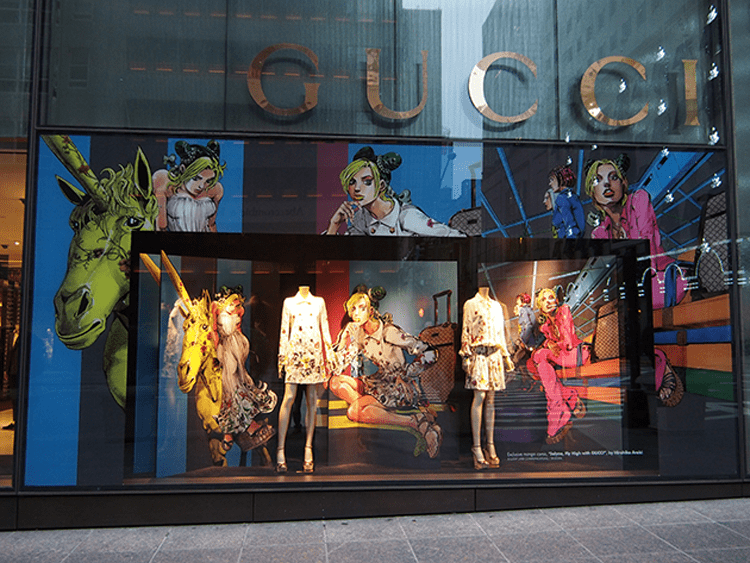
Jojo’s illustrations took over the display windows of Gucci Store in New York (Source)
The story starts with iconic characters from Jojo’s original story being dressed up in outfits from Gucci’s 2013 Cruise Collection. The story was exclusively published as a part of a Japanese high-fashion magazine, SUPR Magazine’s 2013 February issue as well as being shared on Gucci’s facebook. The illustrations also took over the display windows of Gucci Stores worldwide.
Dressing up anime or manga characters is a common approach that fashion brands take. A French luxury fashion house, Louis Vuitton had sourced their outfit to a vocaloid, Hatsune Miku for her opera performance. Hatsune Miku wore outfits from Louis Vuitton 2013 Spring Summer collection.
2 takeaways to have a successful Anime Collaboration
As we saw in the examples above, collaborations with anime can be very effective in catching people’s attention, engaging with them, generating buzz, and improving brand awareness. Here are two key takeaways that should be kept in mind when conducting marketing campaigns that collaborate with anime:
1) Select anime with a strong fan base
There are thousands of anime in Japan, however, choosing anime with an enthusiastic fan base is key. Once you can connect with these dedicated fans, word spreads very quickly. Be careful not to go with too niche of an anime. Even though the fans of niche anime are dedicated too, if there is not enough of a fan base, it’s hard to generate buzz. The enthusiasm may end up spreading only amongst a small community.
2) Show respect to the original
When using anime to promote your service or product, you need to add the aspect of your brand promotion to the anime and not the other way around. Make sure to stay true to the original. Since fans love their favorite anime, they may get upset if you don’t show respect to the original. On that note, if you include small details of the anime that only the enthusiastic fans know, that could really excite the fans and help generate greater buzz.
2. Admiration for American Lifestyle
Japanese love anything from America
I was waiting in a line for almost 3 hours just to buy a donut from Krispy Kreme when they opened their first store in Japan in 2006. Krispy Kreme donuts are tasty, but nobody who lives in the United States would wait for 3 hours to get one.
However, people in Japan were so enthusiastic about the fluffy donuts covered with a lot of sugar. Reportedly, more than 3,000 people visited the Krispy Kreme store every day for months. Why? Because these donuts were a stereotypical American food that they didn’t get to experience in Japan.
Another example is American Eagle Outfitters, one of America’s biggest clothing retail companies, which opened their first store in Japan in 2012. Over 1,000 people waited in line before the store first opened. More than 10,000 people visited the store and they broke their worldwide one-day sales record on the first day. Also, almost at the same time as American Eagle’s ground opening, Old Navy came to Japan and attracted family shoppers.
What we can tell from these examples is that Japanese people initially love anything from America. Foreign companies are excited by the initial interest since It looks it’s so easy and lucrative to expand business in Japan. But is it really? Learn why that isn’t always the case.
Japanese easily move on to the next new thing
Despite the huge success of the first few years, Krispy Kreme had to shut down 20 out of 64 stores in 2016 due to poor business performance. Old Navy closed ALL of their stores in Japan by the end of January 2017, withdrawing from the Japanese market. For American Eagle Outfitter, they are still in business but their sales have been declining since 2015.
The shine of being the new player doesn’t last forever. Since Japanese love things from America and more new brands are always entering the Japanese market, people jump onto the next big thing and forget about old brands.
A long-term strategy is indispensable
The shine of being a new “cool” brand from American won’t last long. Japanese people are very fickle, so you need a long-term strategy before jumping into the Japanese market.
Starbucks’ Success
It has been over 20 years since Starbucks opened their first store in Japan, but they are still loved by Japanese people. It seems the brand image of Starbucks keeps going down in the US, while in Japan they have been able to keep a positive brand position as “The Third Place” in Japanese people’s daily lives alongside home and work, offering all the comforts of home. They no longer sell newness of the cool brand from America, but instead sell a Starbucks experience that is localized to the market, which was enabled by their long-term strategy to be a part of the Japanese person’s lifestyle.
For example, Japanese cherish cherry blossoms and they have “Hanami”, a flower viewing picnic party. Every year, Starbucks sell exclusive Sakura (cherry blossoms in Japanese) drinks and merchandise during the cherry blossom season in the spring. These products are extremely popular and quickly sell out.
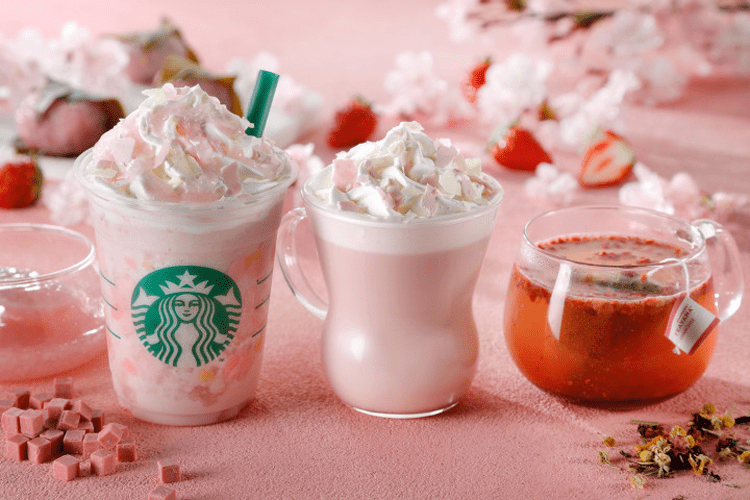
Starbucks Sakura Collection 2018 (Source)
The revival of Krispy Kreme
Krispy Kreme successfully revitalized business in Japan by offering products and experience fit Japanese people’s sense of taste and lifestyle. They introduced Brûlée Glazed Custard, which is less sweet than Krispy Kreme’s signature Glazed Doughnut, because Japanese people are not fans of very sweet sugary foods. Also, they customized store layouts depending on locations. For example, they installed kids playgrounds in stores located in suburban shopping malls for families while more counter style seats were put in for areas where there are a lot of office workers.
The norm in Japan is a few years behind
Even though Japanese people admire the American lifestyle and jump on anything from America, America’s changing values or social norms are not necessarily the case.
Lack of Diversity
Diversity is important in the US and inclusiveness in product design and marketing communication is getting more and more important. We see more marketing campaigns where the models are not digitally retouched and there is more diversity in sizes and races in advertising.
The not-retouched-model movement was first led by aerie, American Eagle’s women’s underwear line. In 2014, aerie launched the “aerie REAL” campaign, featuring models of all sizes in unretouched photos in all of their marketing communication. Through this campaign, they empowered women to be confident in themselves and their bodies. The campaign is still going and is now a core value of the brand.

aerieREAL campaign marketing visual (source)
When the campaign launched globally, I was managing aerie’s marketing in Japan. While the campaign was greatly applauded in the US market, the responses from people in Japan was quite different. It was really difficult to get customers and even employees to understand why the campaign made sense and was a good idea. Employees got confused and complained to me asking why we suddenly changed the marketing visuals. Customers were shocked when entering stores and advertisements using unretouched plus-size models, models with stretch marks, and models with tattoos.
In Japan, people believe skinnier is better and plus-size models had never been a part of any marketing campaigns for trendy fashion brands. Models on any marketing campaign visuals have flawless skin as if they are made of porcelain. Also, having a tattoo is a big no-no because tattoos are associated with being a part of the Japanese mafias, also known as Yakuza. It was too early for the Japanese to accept diversity and embrace being real at the time.
Plus, it was thrown at them abruptly without staff at the stores even understanding what was going on. When introducing new values or social norms, it is recommended to do research to understand how target markets will react. That being said, change is happening and the change is starting from Millennials.
Takeaway: Balance is the key
It’s one thing to know that Japanese love the American lifestyle but it’s also important to understand that they may not easily accept new values or norms from the U.S. Timing is key and it may take a while before they are adopted by Japanese.
Change is coming and there are brands founded by Japanese Millennial women that are getting a lot of loves from women by offering products that solve unspoken problems that women have had. Here’s one example:
Feast: A lingerie brand for women with small breasts
They help these women be confident about their body by offering bras that enforce the thinking that breasts are beautiful regardless of their size.
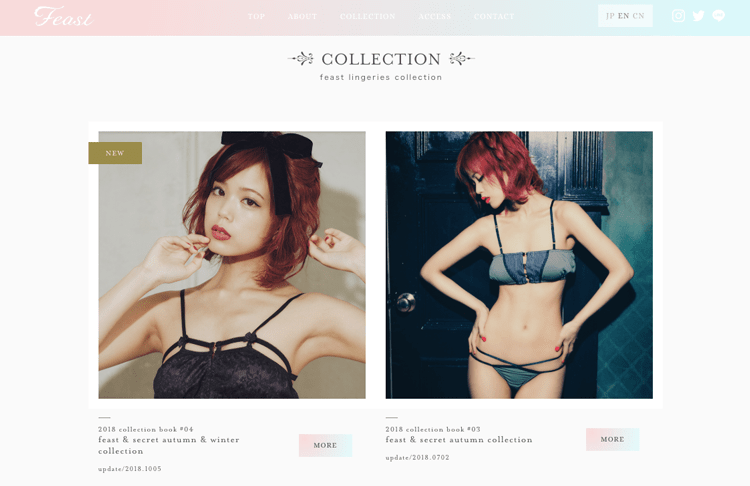
Feast’s website (source)
Final thought
We have learned two unique characteristics of Japanese people that will help you successfully expand your business in the Japanese market. In both cases, I would conclude that understanding of your target users is indispensable. Japanese people’s values are changing as we saw in the case study of the women’s lingerie brand, Feast, and without staying up to date on Japanese values, companies can make mistakes when creating marketing content.
What is the best way to understand your target users in Japan? It depends on your target demographic and products/services you are trying to market. There is no one-size-fits-all solution. We, at btrax, provide expertise in market research and market expansion strategies for Japan, which are tailored to your unique business. Contact us today to discuss how you can successfully grow your business in Japan.







